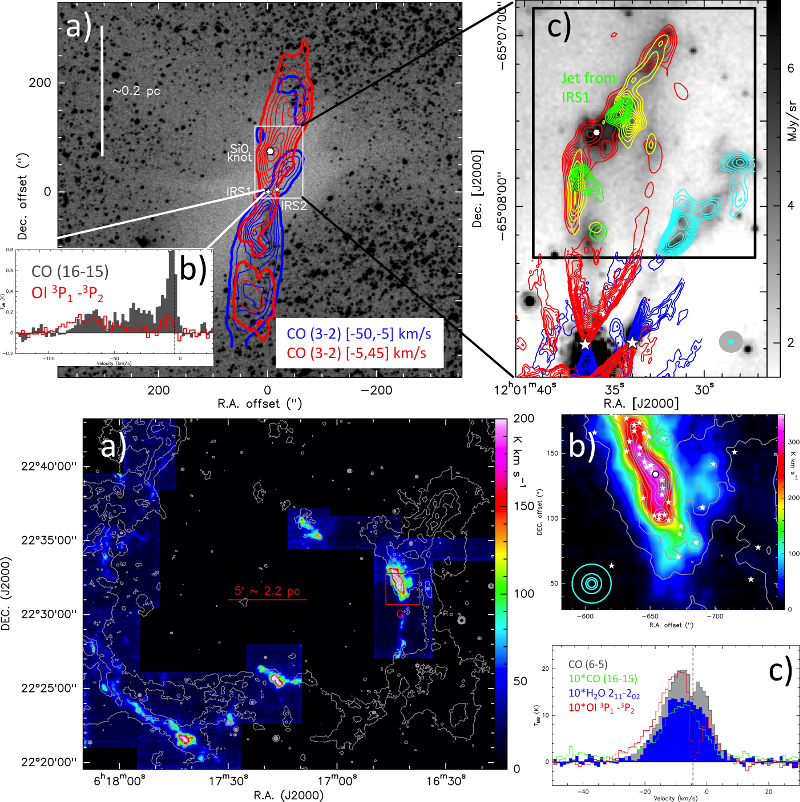
|
EPoS |
|
EPoS Contribution
|
|
Shocks and the Early Phases of Star Formation
Antoine Gusdorf LERMA, Paris, FR | |
|
Shocks are ubiquitous in the early phases of star formation. They accompany, and often reveal the formation of isolated proto-stars in the form of jets and outflows (like in BHR71, see figure 1). In high-mass clustered star formation, low-velocity shocks seem to play a key role in feeding accreting material to massive dense cores within filaments, a view revealed recently by the advent of Herschel and ALMA. Finally, in supernova remnants (e.g. IC443, figure 2), shocks might have triggered a second generation of induced star formation.
The study of shocks in the early phases of star formation is vital to progress towards a better understanding of the early phases of star formation. In particular, shocks play a key role in the extraction of angular momentum by protostellar jets from accretion disks. They consitute an important mode of feedback exerted by the stars on galaxies, as outflows and supernova remnants modify the star formation efficiency and chemistry on small and large scales. And finnally they probably contribute to the shaping of the initial mass function, by feeding material onto the cores that are the precursors of future stars. In my talk, I will review how the latest observations from ALMA and SOFIA (combined with Spitzer, Herschel, PdBI) contribute to challenge our understanding of shocks associated to the early phases of star formation in archetypes sampling a variety of environments, from isolated low- and intermediate-mass star formation to clustered massive star formation, to supernova remnants. I will show how these new observations drive new model developments, such as irradiated shocks and pseudo-3D models. I will also present new clues brought by our observations on jet precession, outflow cavity entrainment, dense filament formation, and SNR feedback. | |
 | |
| Caption: Shocks and the early stages of star formation. The upper figure shows the isolated, low-mass protostellar outflow BHR71: large-scale APEX CO (3-2) image overlaid on an optical image in panel a), SOFIA-GREAT OI and CO (16-15) spectra on the IRS1 protostar in left inset b), and ALMA CO observations showing the jet from IRS1 (in green) , the outflow cavities (blue and red contours), and their interaction regions (yellow contours), overlaid on the Spitzer-IRAC emission at 8 microns in panel c). The lower figure image shows the IC443 supernova remnant: large-scale APEX CO (6-5) map (colours) and Spitzer-MIPS overlay (24 microns, grey contours) in panel a), zoom in on the IC443-G region, with the starred symbols showing possible YSOs and HeAeBe stars in panel b), and molecular spectra at the hexagon's position from APEX, Herschel, and SOFIA in panel c). | |
| Collaborators: S. Cabrit, LERMA, FR R. Guesten, MPIfR, DE B. Lefloch, IPAG, FR F. Motte, IPAG, FR |
Key publication
Suggested Session: Galactic-scale star formation |